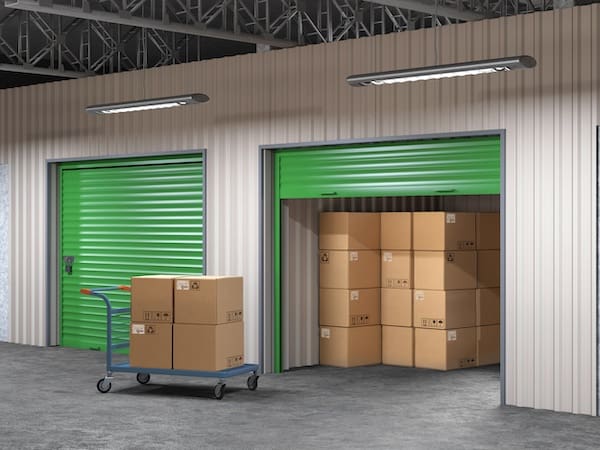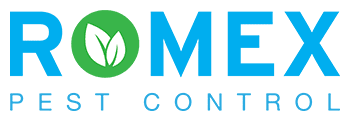
Pest Control Checklist for Warehouses & Logistics
Keeping your warehouse pest-free isn't just about cleanliness; it's about safeguarding your inventory, protecting your property, and maintaining your reputation. With a myriad of items from various origins stored together, the logistics and storage industry faces unique pest control challenges. A comprehensive pest control checklist is your first line of defense.
Assigning responsibility, regular audits, and educating your team are crucial steps in managing pest control effectively. In the bustling world of logistics, where shipments come and go, ensuring a pest-free environment is critical. You'll prevent product damage and avoid the nightmare of customer rejections due to infestations.
Remember, pests don't just pose a threat to your products; they can compromise the entire supply chain. That's why adhering to a detailed pest control program is not just a recommendation—it's a necessity for your operation's success.
Why is Pest Control Important for Logistics Storage and Warehouses?
When you're managing a logistics storage or warehouse facility, understanding why pest control is crucial not only helps maintain your inventory's integrity but also safeguards your business's bottom line. Pests pose a significant threat to warehouses and logistics facilities due to potential product contamination, spread of diseases, and structural damage. This can lead to a slew of negative consequences, from lost inventory and revenue to serious health code violations.
In logistics, pests are not just a local problem. They often hitch a ride on international shipments, introducing new challenges for pest management. Once inside, they can quickly find hiding spots within your facility's nooks and crannies, turning into an infestation that's tough to beat. Given that your stored goods might originate from various locations, there's a persistent risk of new pests entering the environment.
Consider the damage pests can inflict:
- Rodents like mice and rats can gnaw through wood and electrical wiring, potentially causing fires.
- Insects such as beetles and moths can spoil stored food products.
- Cockroaches and flies are notorious for spreading diseases.
Customer trust is paramount in the logistics business, and nothing can damage it faster than a pest-related incident. Imagine having to inform your clients about contaminated or damaged goods—it's not a situation anyone wants to be in. Plus, customer rejections of shipments are not just embarrassing—they're costly. Damage to your reputation can echo much farther than the immediate financial losses, impacting future business opportunities and partnerships.
Regular pest control audits and a reliable pest management system are you're best defense against these threats. Making sure you have a plan tailored to the specific needs of your facility is key. It should be comprehensive enough to address the variety of pests that could infiltrate your operations, yet flexible enough to adapt to the ever-changing landscape of global logistics.
Remember always to prioritize cleanliness and routine maintenance, as they can significantly reduce the appeals of your space to pests. Keeping areas free of clutter and waste will deprive pests of breeding grounds and make your facility less enticing as a new home.
Creating a Pest Control Plan
Assess the Risk Factors
To shield your warehouse from pest-related threats, it's vital to assess the various risk factors that could invite unwelcome visitors. Consider the past history of pest problems and closely analyze the potential for future infestations. You'll want to inspect your layout, building construction, and the types of products stored to determine areas at higher risk. Don't overlook the surroundings of your property either; neighboring sites can impact your pest risk level, especially if your facility is near attractions like bodies of water or railways.
Identify Common Pests
Knowing your enemy is half the battle in pest management. Focus on the specific types of common pests that might infiltrate your storage area. Rodents, crafty invaders, leave greasy marks and gnawings as evidence of their presence. Cockroaches sneak in through crevices and rapidly colonize undetected areas, while ants signal a larger hidden infestation. Your identification efforts are critical for tailoring your pest control strategies to the exact threats your warehouse faces.
Understand Local Pest Control Regulations
Stay ahead of the curve by familiarizing yourself with local pest control regulations. Safety and health standards may vary by region, and knowing these rules ensures your plan is both effective and compliant. OSHA and other international regulatory bodies offer guidelines that could serve as benchmarks for your pest control measures. Align your strategies with these standards to avoid penalties and to maintain high operational integrity.
Set Up Monitoring and Reporting Systems
Effective pest management relies on continuous vigilance. Establish robust monitoring and reporting systems that track pest activity and control measures' efficacy. Record inspection results meticulously and act swiftly when nonconformance is detected. Regular audits, alongside a structured response to findings, create a dynamic defense against pest incursions. By prioritizing these prevention efforts, you ensure your storage facilities remain secure and your inventory protected.
Preventative Measures
Implement Good Sanitation Practices
Your first line of defense against pests in warehouses and logistic storage areas is establishing good sanitation practices. Pests like ants, cockroaches, and rodents are attracted to mess and dirt, so it's crucial you keep the facility clean to discourage infestation. Here’s how you can maintain high sanitation standards:
- Ensure all areas are free of food debris, especially in spaces where employees eat. Regular cleaning of break rooms and cafeterias helps eliminate food residues that attract pests.
- Proper waste management is a must. Garbage should be disposed of in sealed containers and removed regularly to prevent it from becoming a pest magnet.
- Drainage systems need consistent monitoring. Standing water from clogged drains can attract pests looking for a water source.
- Regularly inspect and clean any high-volume equipment, including soda machines and kitchen equipment, to prevent spills and crumbs.
In high-heat areas like kitchens, proper ventilation not only maintains air quality but also helps to deter pests that thrive in moist environments.
Seal Entry Points
It's a fact that pests can sneak in through the smallest of gaps. Sealing entry points is a critical step in a pest control checklist. To ensure comprehensive coverage:
- Inspect for and seal cracks and holes on the exterior of the building, paying special attention to places where utilities and pipes enter.
- Windows and doors should not only close securely but also have intact weather stripping to prevent pests from squeezing through.
- Vents, the often overlooked gateways for pests such as rodents and birds, should have adequate screening to block entry without obstructing airflow.
Remember, the goal is to create a barrier that deters any pest from viewing your warehouse as an accessible shelter or food source.
Store Goods Properly
Improper storage isn't just a logistical headache; it's a welcome sign for pests. Storing goods properly contributes significantly to avoiding pest-related problems. Follow these practices:
- Inspect all delivery boxes for signs of pests before bringing them into your warehouse. Infestations can quickly spread from contaminated supplies.
- Implement a first-in, first-out rotation system for inventory to prevent long-standing stock from becoming a haven for pests.
- Food items, either raw materials or packaged products, should be sealed and stored off the ground to minimize their allure to pests.
- Consider the use of airtight containers and proper labeling to not only organize inventory but also to provide an additional layer of protection against pests.
By maintaining a clean, well-sealed environment and storing goods correctly, you're building an effective foundation for pest management that safeguards your inventory and your business's reputation.
Training and Education
Educate Employees on Pest Management
Pests are not just nuisances; they're potential threats to the safety and cleanliness of your logistics storage or warehouse. It's essential that every employee understands the risks associated with pests and the role they play in pest management. Comprehensive education on types of pests, signs of infestation, and the damage they can cause is a critical first step. This knowledge arms your team with the ability to spot early signs of trouble and take swift action.
Employees should be well-versed in the specific protocols for reporting pest sightings. This includes knowing how and where to record these incidents so that there's an accountability trail. Also important is education on proper hygiene practices to reduce the attraction of pests—particularly in areas where they eat and store their food. Tie education back to the bigger picture: a pest-free environment is not just about following rules, it's about protecting the warehouse's integrity and the safety of everyone involved.
Conduct Regular Training Sessions
Ongoing training is key to maintaining a high level of pest control awareness among your workforce. Schedule regular sessions to keep everyone up-to-date on the latest pest control strategies and to remind them of established procedures. These training sessions should also be used as opportunities to introduce new equipment or methods for reporting pest activity, ensuring that the team is adept at using current monitoring and baiting systems.
Training doesn't just happen in the classroom; it's also about hands-on experience. Simulated exercises can help staff practice identifying potential entry points for pests or managing a hypothetical pest outbreak. These practical experiences enrich their understanding and encourage proactive rather than reactive pest control measures.
Foster a Culture of Awareness
A safe and healthy workplace is everyone's responsibility. To foster a culture of awareness, it's crucial that pest control isn't seen as just a job for the maintenance team or an external pest control service. Encourage employees to feel that they are an important part of keeping the warehouse pest-free. Reward systems for reporting pest issues or enacting effective preventative measures can incentivize staff to stay vigilant.
Pest awareness signage and information bulletins can serve as constant reminders of the importance of pest control. Regular communication about the outcomes of pest audits and the effectiveness of the pest management system can affirm the value of each team member's contribution. You can augment this approach by designating pest management ambassadors—staff members who help to drive the pest control agenda and serve as role models for their colleagues in implementing best practices.
Collaboration with Pest Control Professionals
Seek Professional Advice
When grappling with pest management in your logistics storage or warehouse, it's imperative to partner with certified pest control experts. These professionals bring not only a wealth of experience but also a deep understanding of regulatory requirements and safety protocols. They can provide critical guidance on the appropriate use of pesticides, ensuring compliance with health and safety standards.
You'll need to maintain a regular relationship with these experts. Part of their role is to help you develop a pest control strategy that aligns with both your operational needs and integrated pest management (IPM) principles. They help you identify pests correctly, an essential step given that different pests require different control measures.
Schedule Regular Inspections and Treatments
As part of your ongoing pest management plan, scheduling regular inspections with your partnered professionals is crucial. These inspections serve as a preventative measure and help catch potential issues early on. Treatments can often follow a monthly rhythm, but may vary based on the season or pest activity levels.
Consider these key tasks and checkpoints for your inspections:
- Verification of map accuracy for the location of traps and bait stations
- Use of approved pesticides in accordance with label instructions
- Maintenance of accessible logs to record both pest control procedures and sightings
Regular inspections and treatments ensure not just a reaction to current pest problems but a proactive stance against future infestations. Effective collaboration with pest control professionals plays a vital role in safeguarding the integrity of your warehouse and the health of your employees.
Conclusion
Your proactive approach to pest management is key to safeguarding your logistics storage and warehouse operations. Partnering with certified pest control experts ensures that your strategies are not only effective but also compliant with health and safety regulations. By staying vigilant with regular inspections and treatments you'll keep potential infestations at bay and maintain a pest-free environment. Remember that the health of your employees and the integrity of your warehouse are paramount. Trust in professional guidance to keep your operations running smoothly and your storage spaces clear of pests.
We hope you enjoy these informational articles. If you'd like to learn more about our eco-friendly pest control services, call (844) 955-2447.
Read More
Your Path to a Pest-Free Home or Business
Romex Pest Control
We are committed to protecting you, your children, and your pets with our eco-friendly, child-friendly, and pet-friendly guaranteed pest control solutions.
Romex Pest Control is fully insured and licensed in Texas, Oklahoma, Louisiana, and Mississippi.
Service Areas:
Hours
M-F 8 am–5 pm
Sat 8 am–2 pm
Sun Closed
Established 2016 © Copyright 2025 Romex Pest Control










